
SET EXPO 2016
SET Expo 2016
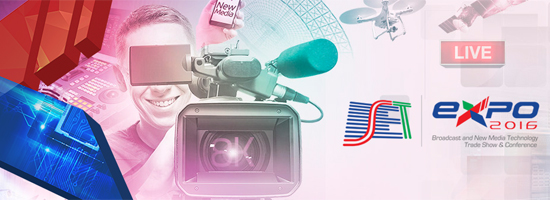
One of the major events in the broadcasting and new media sectors of the year took place at Expo Center Norte, SET EXPO 2016, in the Exhibition Hall Red, São Paulo (SP). With Conference: 08/29 to 09/01 and Trade show: 08/30 to 09/01.
Organized by SET (Sociedade Brasileira de Engenharia de Televisão), a not-for-profit technical association consisting of technology and operating companies and professionals and whose main purpose is the development of technical knowledge throughout the entire electronic media supply chain, from production to delivery. In Brazil, it represents the largest discussion forum on market standards and trends for the creation, management and distribution of electronic content.
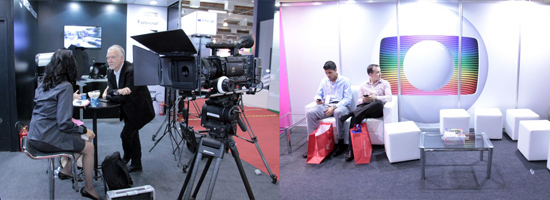
The event will host the major manufacturers on the global market; executives and technical personnel, specialists as well as researchers from government bodies, plus the press, technology, entertainment and broadcast sectors.
Last year, in its 27th edition, 15.900 participants attended the 5-day event, with the presence of 2.040 conference delegates, 150 members of the press, 5 international pavilions, 192 exhibitors, 8.000 m² net exhibition area and more than 400 exhibitor brands.
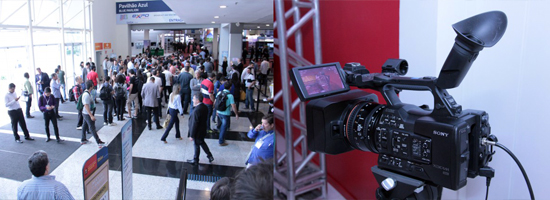
The event, this year, will had an exhibition area of 15.000 m², housing the stands of benchmark companies in the equipment, technology and services sector of the broadcast, telecommunications, audiovisual and new media market. This area will consist of thematic and international pavilions, made it easier for visitors to find their way around.
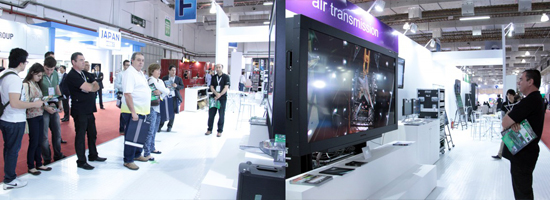
A program to support startups that create solutions for the entertainment industry, such as audiovisual producers, radio and television broadcasters, the cinema and new media will be at SET EXPO 2016, and it is called SET Innovation Zone.
SET Innovation Zone program had two stages: the public call, with free and open registration, and the presentation of the solution at SET EXPO 2016. And the 10 companies selected will receive a standard exhibition stand, already assembled, within the Innovation Pavilion of the trade show, and did showcase themselves, completely free! This was a unique opportunity for companies in the initial set-up phase. If you have any interest, it is worth taking a look at for more information.
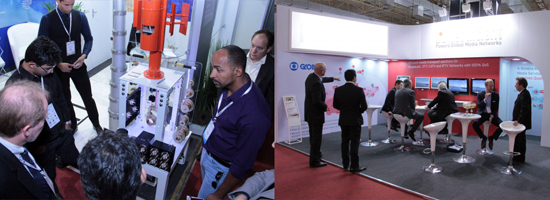
The topics to be discussed during the Congress were:
August 29, 2016: Distribution, Exhibition & Transmission: TVD – Analog Switch Off, Automation; Internet & TV: Sensoring & Big Data, Content On-line, OTTs & APPs – Current scenario of OTT services, Projects And Professional Profile; Hot Session: The Future of free-to-air Television; Innovation & Disruptive Technologies: VR – “Will Virtual Reality be the most social platform of all?”; Infrastructure: Energy - Quality and Efficiency; Research & Development: Vision of communicators regarding to the future of broadcasting and new media; Regulatory & Norms: EAD – Be Digital - The Rio Verde (GO) pilot experiment, preparations for Brasília and São Paulo and projections for Brazil; Innovation & Disruptive Technologies: Drones; Consumption: Connected TVs and interactivity.
August 30, 2016: Opening & Commemoration: Opening Ceremony SET EXPO 2016 & ISDB-T 10 years celebration; Trade Show SET EXPO 2016: Inauguration Fair SET EXPO 2016 – RED Pavilion – ground floor; Hot Session: Analog Switch Off; Internet & TV: IoT – Internet of Things & Swarm Intelligence, Network Neutrality - Internet Regulatory Framework; Research & Development: Innovation in teaching technology, Academic & Scientific, ICT - Japan Context; Regulatory & Norms: Regulatory Processes; Content Production: Technology in News and Sports, Audio & Acoustics; Innovation & Disruptive Technologies: NHK Lab – What is coming in next 10 to 20 years?, SMPTE Centennial.
August 31, 2016: Radio: OM x FM migration reflexes, Radio, Internet, Music and Mobile, Efficiency Aspects of FM Transmission, 80 years of Radio Nacional; Hot Session: Challenges VOD & OTT; Research & Development: High Dynamic Range Master Class; LATAM: The Future of Television Programming, Consumer Market; Infrastructure: Cloud, Non-Ionizing Radiation (NIR) Standards at Sites, How hardware virtualization must contribute to the future television; Content Production: ITU & American Spectrum Auction, 4K/8K, UHD Premium Certification, HLG, PQ, WCG, HEVC HDR10, Olympic Games, Interference TV & 4G, Storage; Regulatory & Norms: Accessibility.
September 1, 2016: Keynote: UHDTV – From Production to Distribution; Internet & TV: Digital Security & IEEE Ethernet Alliance; Hot Session: UHDTV- From Production to Distribution; Consumption & Audio Visual Production: Displays, Displays (stage) & Interaction, Projection systems, Lighting; Content Production: Virtual Scenarios and Games, Contribution kits; Distribution, Exhibition & Transmission: Evolution of space segment for contribution and distribution in the era of Ultra HD 4K, Streaming and distribution IP - Challenges, Transmission systems; Research & Development: Ultra High Definition.
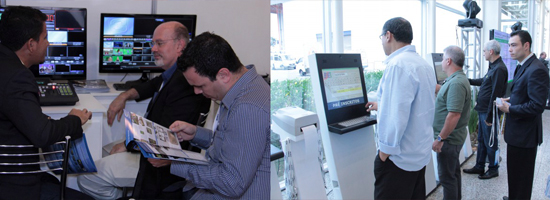
Stay tuned in those numbers:
Conference: August 29 until September 1, 2016:
Trade Show: 12 noon until 8 pm;
Conferences: 9 am until 8 pm;
Expo Center is located in José Bernardo Pinto street, 333 - Vila Guilherme, São Paulo – SP.
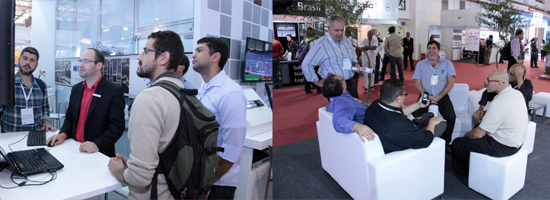
In this video you can view some of SET Expo 2016:
We would like to thank Marcel Almeida for writing for us.
More info you can find on his LinkedIn: br.linkedin.com/in/marcelmg77/en or follow him on Twitter @marcelmg77
Like us if you want on Facebook, follow us on Twitter and Subscribe to our YouTube channel.
mentioned:
SET EXPO 2016 : Website - facebook - Twitter - YouTube
SET : Website
Rodolfo Souto , being a tech guy at TV Globo
Rodolfo , being a tech guy at TV Globo
We met Rodolfo Souto some years ago at the Formula 1 at Interlagos, São Paulo. He was responsible for some cabling between the international Broadcasters and the Host TV Globo. In their booth at the TV compound we found Rodolfo with his head in a rack. There was a ‘small problem’ in which he had to solve’ he said. The next morning we spoke to him again, he told us he re-cabled the whole rack overnight to solve the problem. A Die-Hard technician this Rodolfo. And…. he spoke very good english. so we invited him for our blog.
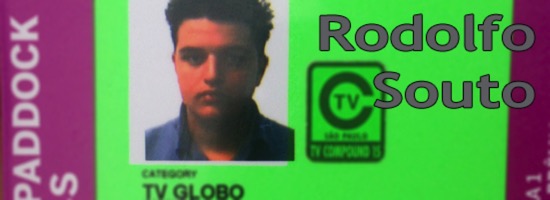
BB: Can you tell us about yourself and your job at - External events São Paulo?
Rodolfo: My Name is Rodolfo, and I`m a Technician of TV System. I am working for TV Globo since December 2006, almost 10 years now.
BB: Tell us about the company TV Globo - External events São Paulo and how long does TV Globo - External events São Paulo exist?
Rodolfo: The External team of Events in São Paulo exists since 1975 i think. The first soccer game that the External events team broadcasted was with only 3 cameras, the signal output were a Analog MicroWave route between the Soccer-Stadium and TV Globo in São Paulo. The guys that worked on that production time are still very proud of what they achieved those days.
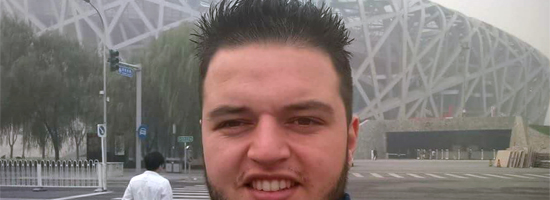
BB: Did you see a growth past years in working at international events for you in Brazil?
Rodolfo: Yes a lot. I Worked at productions like the Confederations Cup, the World Cup in 2014 and this year i will be at the Olympic Games in Rio de Janeiro. Aldo, i worked on the last 5 Formula 1 GrandPrix’s at Interloagos in Brazil.
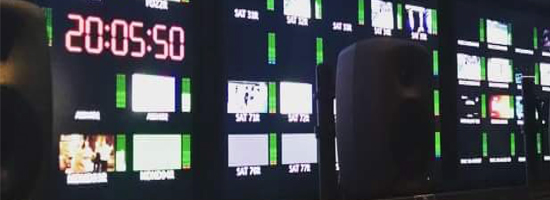
Our OBvan at TV Globo is one of the top of Latin America. I can see that after all this years Broadcast production are getting bigger and harder to achieve in the technical sense. I like that, it makes me feel good when i am working on an International Event, meeting colleagues from all over the planet and being able to talk with them.
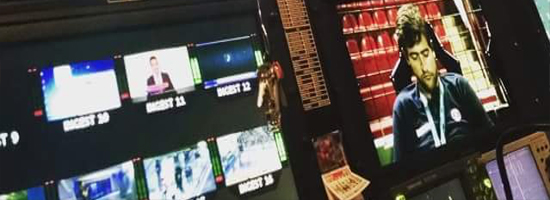
BB: What this growth ment for you and your colleagues at TV Globo - External events?
Rodolfo: TV Globo has 5 department: Rio de Janeiro, São Paulo, Belo Horizonte, Brasilia and Recife. When we have something new coming for us, normally it starts in Rio and São Paulo. So we get a lot of time to learn and understand the new technology, equipment and solutions. This is very well arranged at TV Globo.
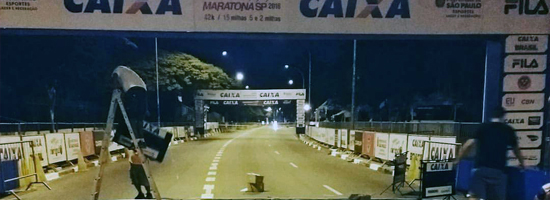
BB: Do you work besides Brazil also in other regions on the planet?
Rodolfo: Yes i did. In 2014 i went to China and also Singapore. The Brazilian national team played 2 friendly games over there. I spent even 12 days on this location job. It was amazing meet the other side of the world. In 2015 i went to Colombia to broadcast a Corinthians`s game at the Libertadores championship. That was awesome too. Speaking English is very important on International events. It was because of the english that i got this opportunity to go to China and Singapore. Knowing the english language did give me this opportunity.
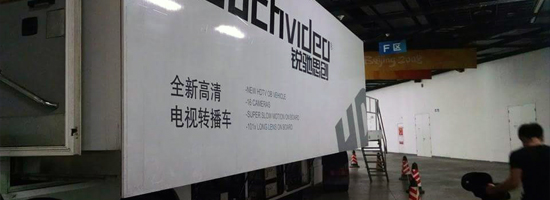
BB: On location at international events, is it difficult for you to communicate with Europeans, Americans, Australians or LATAM countries?
Rodolfo: Yes, with the LATAM’s i try to speak in Spanish but especialy with the Argentines it is hard. They speak to fast. With the Europeans it is alright, they speak very well english. It is only boring for me when they speak their own language. I do not understand anything they speak than. I worked with Australians at the World Cup in Sao Paulo, that was ok too. At the Formula 1 i speak a lot with the British guys. For me it is kind hard, to understand them. It is because i studied American English, so it is hard to get used to understand their they speak english, but in the second day everything goes already better. Every time you learn.
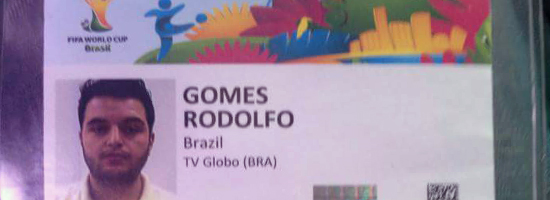
BB: How do you see your job due to Olympic Games 2016 in Brazil?
Rodolfo: It will be awesome for sure. We will never see an event like this in Brazil soon again. I am very excited to be part of this event. I will be working at Arena Corinthians in São Paulo working for the OBS. It will be unique experience, my expectation are the best you can imagine.
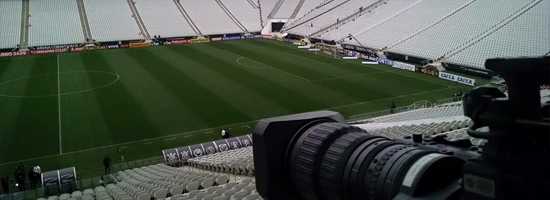
BB: Is there any surprising challenges you had at events past years?
Rodolfo: No, not really. We always have something new popping up every day in this kind of job. After some years i got used to all types of bad and good surprises. The challenges make us better and stronger. Things that i learned on International events i carry with me at every other production i do, in Brazil and abrought.
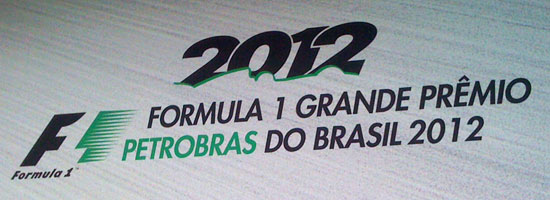
BB: What surprising challenges you think you will have at the Olympics this year?
Rodolfo: I think that we will have all the possible surprises thinkable. We will be the Host Broadcaster at the Olympic Games. All the broadcasters in the world will come to us to ask for some signals or assistance. A lot to solve and help fur sure.
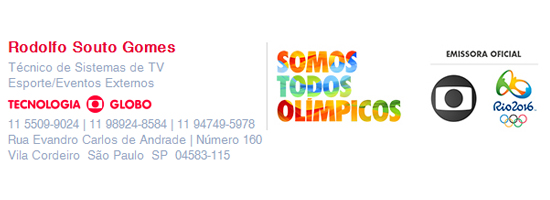
Video Olympic Games (Official Theme) - Rio 2016:
Like us if you want on Facebook, follow us on Twitter and Subscribe to our YouTube channel.
mentioned:
Globo TV: website
Expo & Conference - ABTA 2016
Expo & Conference - ABTA 2016
One of the most traditional events on pay TV and digital services in Latin America will took place this month in São Paulo at Transamerica Expo Center, from 29 June to 1st July, the ABTA Expo & Conference 2016.

In the year of the Olympic Games in Brazil, ABTA completes 24 years bringing innovations in pay-TV, broadband and media market, focusing on innovation in video services, new technologies, on-demand content distribution platforms such as IPTV and OTT, advertising, satellites, TI, and distribution of linear, non-linear and high-definition content. The Conference will had presentations and panel sessions by highly qualified speakers with professionals from channels, ad agencies, operators, regulators and government. The immersion in technology and management trends will be available in Pay-TV Seminars (STAs), also training seminars with presentations of case studies and market solutions, that is essential to know what is new about technologies and pay-TV tools.
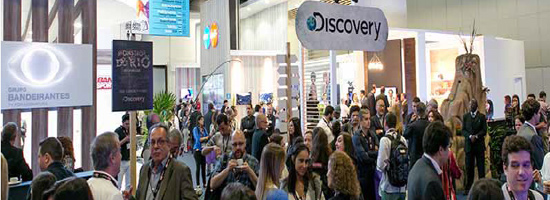
The issues to be addressed in the STAs are: The new consumer of video, DOCSIS 3.1, Advances in multiplatform delivery, The new generation of headends, Sincab, The Internet of Things (IoT), Technology that makes new business models possible, User interfaces for set-top boxes, The road to delivery of content on multiple platforms, How pay TV will develop in the next five years, CxOs and The evolution of pay-TV services.
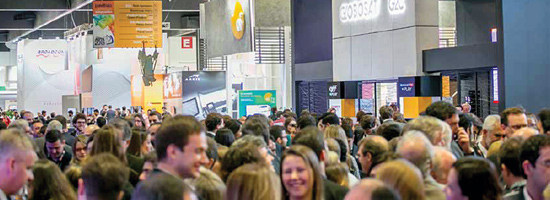
In the Conference program, we have in strategic panels: The reality of the industry and the policy/regulatory outlook, Pay TV in a year of Olympics and challenges, From set-top to cell phone: how pay TV services evolve, Advertising and the Olympic Year, The value of digital services to consumers. In Thematic Sessions we have: The Internet: from the reality of services to regulatory models, User experience and digital services, Audiovisual regulation: from SeAC to VOD, Tackling digital clandestinity, The importance of sports programming to pay TV, Programming in the age of ultrasegmentation, Advertising: consolidation and the role of pay TV, Embracing the reality of on-demand content, Why local production is flourishing, What has happened to C class consumers?, From TV to 4play: the evolution of bundles and offerings and Growing in turbulent times.
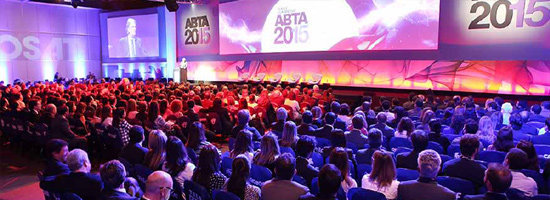
Local and international exhibitors did showcase their brands and developed new business leads in an exhibition space of 9000 square meters.
video:
We would like to thank Marcel Almeida for writing for us.
More info you can find on his LinkedIn: br.linkedin.com/in/marcelmg77/en or follow him on Twitter @marcelmg77
Like us if you want on Facebook, follow us on Twitter and Subscribe to our YouTube channel.
mentioned:
ABTA 2016 : Website - YouTube
IPTV in Brazil
IPTV in Brazil
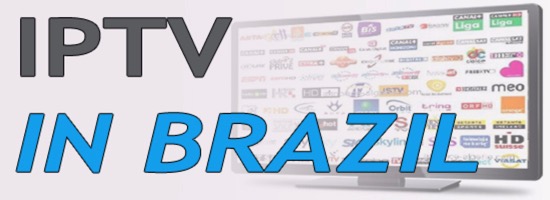
The demand for better quality, greater variety of content, option to consume interactive services are the main points for the growing of the technology and fall in the taste of users. The Television over IP is an alternative technology to DTH that instead of using satellite systems uses a part of the internet bandwidth. This requires a set-top box to change the IP signal to your television. To be able to use the service you need at least an exclusive connection of 4 Mbps for HD content with MPEG-4 compression. However, each channel determines the transmission rate, such as Globo TV that requires HD programming delivering to the client at 18 Mbps.
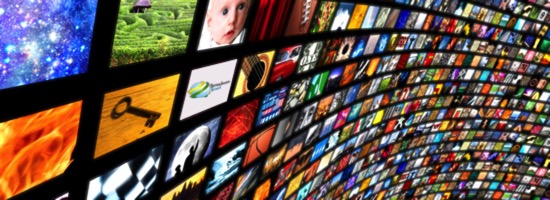
In addition to the interactive system, you can do purchases, access movie sites, videos, music and photo presentations without the necessity of a computer. In the security system can highlight two transmission systems, CAS (Conditional Access System) where there is control of transmission of a service to the consumer; and DRM (Digital Rights Management) that allows or not the use of digital imaging products, video or audio.
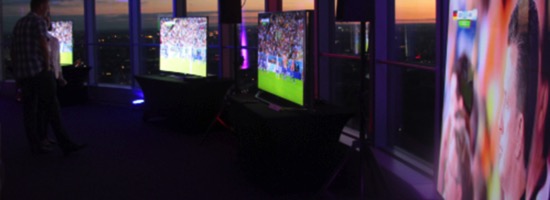
In Brazil, the pioneer was Brasil Telecom with Videon in Brasilia (DF), allowing the viewer to acquire films, documentaries, cartoons, concerts, shows and exclusive content that go beyond the concept of broadcasting, as a combination of telephony services directly on television. Today there are some initiatives at Telefônica, Oi, CTBC and Sumicity in Rio de Janeiro.
Another trend is the Unicast mode, since the possibility IPTV content and flexibility, such as on-demand services. The programming grid (EPG) customization is a one-way, in case of interactivity, and there is a lot of opportunities, exploration and a lot of research to do in this field. It is worth mentioning that connectivity with mobile devices is essential to the success of IPTV and the possibility of content in 4K and 8K with compatible TVs.
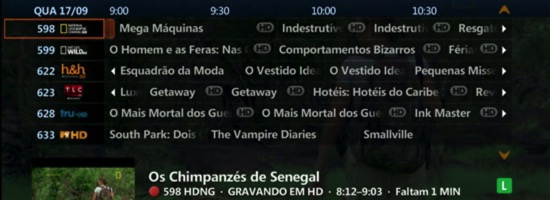
The success of the service will depend on some regulatory obstacles and other technologies such as FTTH, with the aid of optical fiber on delivery of a service with great quality. The QuadPlay with IPTV can replace the use DTH, excluding satellite system dependence, which in adverse conditions the signal may be interrupted, such as during storms or co-exist in a hybrid way. In 2015, the increase in service was 43.24% compared to the previous year, DTH had 60.07% of the market in July 2015, against 61.01% in December 2014 (according to data from Convergecom).
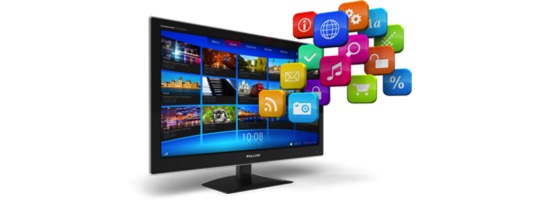
Among the problems faced in Brazil to implement the mass service, there is the limitation of Internet quality (great use of radio, instead of optical fiber) and outdated infrastructure that do not support enough amounts of data. It is therefore essential investment in fiber and high-capacity backbones for the proper functioning. By the end of this year, it is likely that Brazilian market grows along the upgrades of IPTV.
More news on the subject and future trends, you can see here in Broadcast Brazil.
video:
We would like to thank Marcel Almeida for writing for us.
More info you can find on his LinkedIn: br.linkedin.com/in/marcelmg77/en or follow him on Twitter @marcelmg77
Like us if you want on Facebook, follow us on Twitter and Subscribe to our YouTube channel.
mentioned:
Brasil Telecom : Website - Facebook - Twitter - YouTube
Telefônica : Website - Facebook - Twitter - YouTube
Oi : Website - Facebook - Twitter - YouTube
CTBC : Website - Facebook
Sumicity : Website - Facebook - Twitter - YouTube